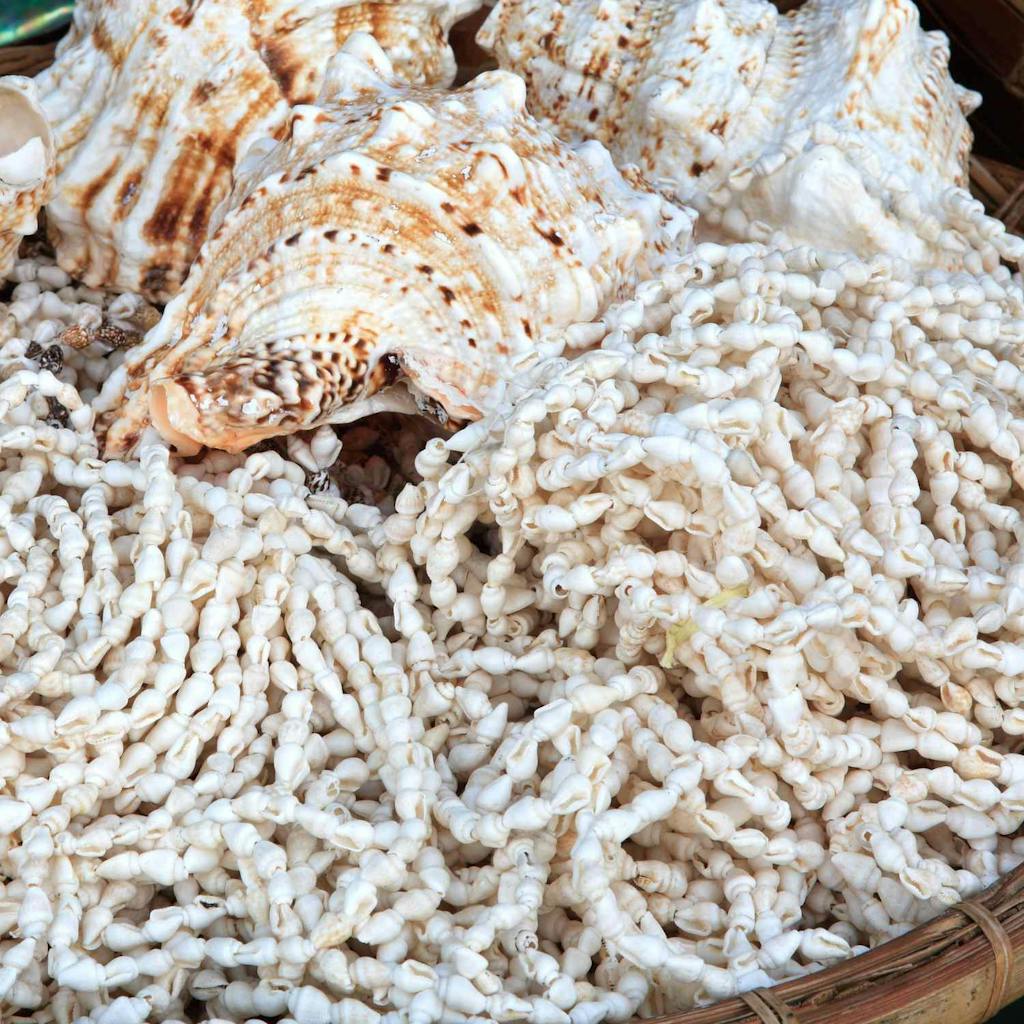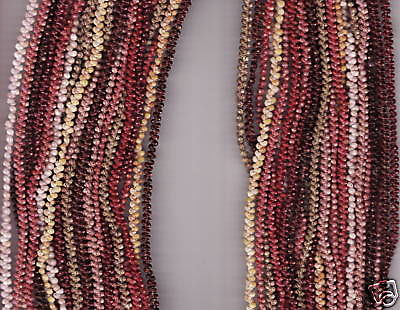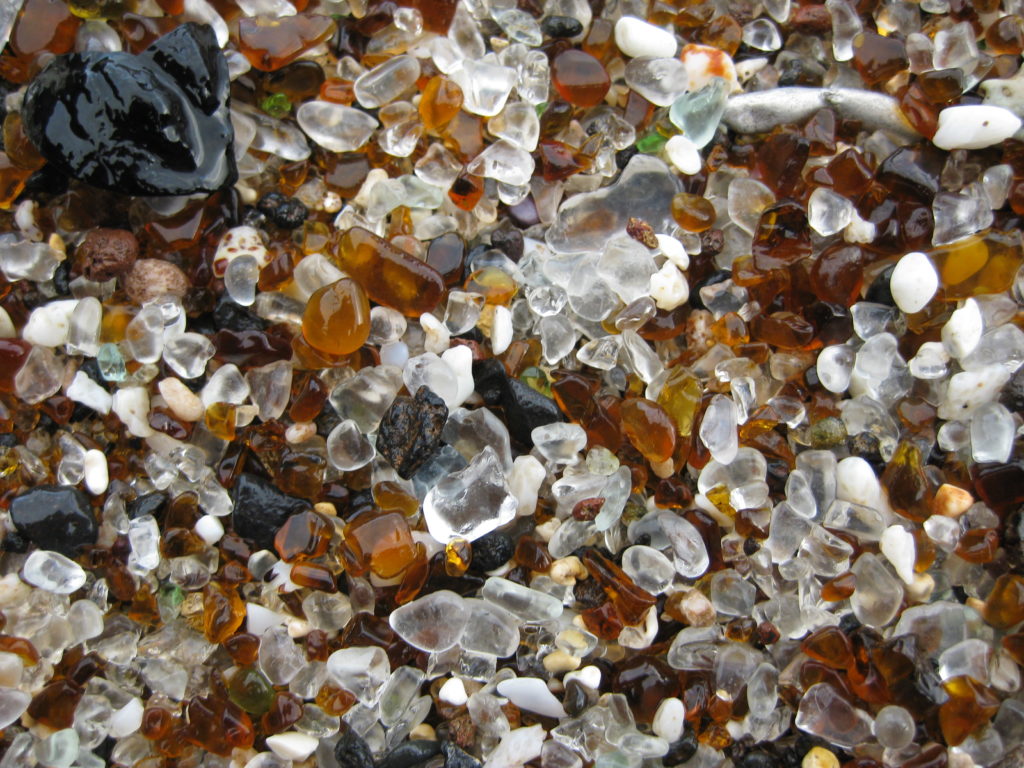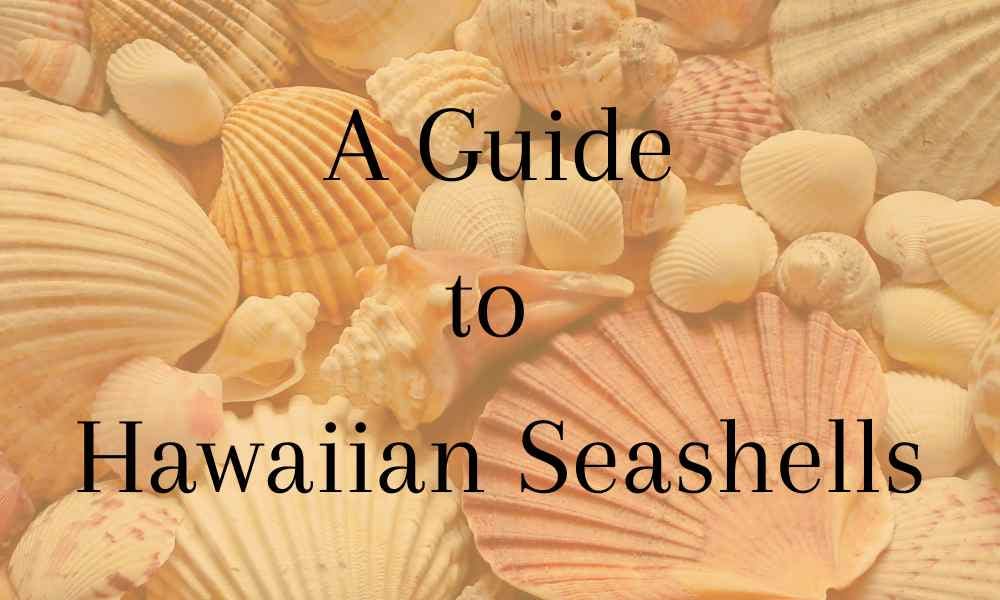Here on the islands, Hawaiian seashells are treasured like gems. Just walk into any jewelry store and you’ll see what I mean. You’ll see diamond-encrusted sunrise shells, gold-inlaid pearls, puka shell bangles, and more. These sea creature husks have been washing up on Hawaiian shores for centuries.
While many locals dive and beach comb to find shells for jewelry or personal collections, tourists will simply scout the sand for a treasure to take home.
Hawaii has a vast variety of shells that are found both in the sand and along underwater shell beds.
The Names & Stories of Hawaiian Seashells
In case you find yourself stooping low to scoop up a shell or two (just don’t take the shells home), and wonder what its name is, here is a quick list of some of Hawaii’s more popular shells to find.
Puka Shells

These are not shells but, in fact, pieces of Hawaiian seashells. They are ubiquitous on Hawaii’s beaches, and you can spot them by their puka, or hole, in the middle.
Puka shells are typically worn-down pieces of a cone shell’s spire, which is the part of the shell that contains all the whorls (think of a whorl as the swirl or spiral growth of the shell).
A naturally occurring hole forms in the center of these weathered shells, hence their name puka shell. Because of their hole, puka shells are ideal beads for necklaces, bracelets, and other jewelry.
In fact, pukas were regularly strung in Hawaii and were traditionally thought to assure a safe and peaceful sea voyage, especially for the sailors setting out on long journeys. Sea travelers wore Puka shell necklaces, and these Hawaiian seashells still serve as a symbol of watermen and water women in the islands.
Shiva
Just as common as puka shells, the shiva shells are white and polished and scattered throughout all of Hawaii’s beaches. You’ll probably spot these during your vacation because they are easy to find and simple in their natural beauty.
Shiva shells are the operculum, or little lid, of the shell that protects the creature’s soft body. Like all Hawaiian seashells, these ones are tumbled in the waves and sand and worn down to about the size of a dime and are polished to a shine by the sea.
Sunrise: The Hawaiian Seashell of Royalty
A sunrise shell is possibly the most treasured shell of the Hawaiian seas. Hawaiian royalty were once the only people who wore these shells.
The sunrise is a deep water scallop that boasts vibrant colors of yellows, oranges, and pinks, much like the colors of a sunrise.
They are scarce and hard to find. That is why you’ll see a hefty price tag on them in stores. Although uncommon, it is not unheard of for sunrises to wash up on the north-facing shores of Oahu, Kauai, and Niihau.
Cowry
Traditionally, these shells were known as fertility symbols by Hawaiians, but today, they are collected simply as beautiful shells. They can vary in size between an inch to six, and also in color. Cowry names usually denote their patterns, and common ones found in Hawaii are the humpback cowry, tiger cowry, snakehead cowry, checkered cowry, honey cowry, and lynx cowry. If you remember the sugary cereal Smacks, then you will be able to visualize the shape of cowry shells.
Cone Shell
Cone shells get their name from their shape but come in all sorts of colors and patterns. These types of shells are shockingly bright with incredible detailing.
The creatures inside cone shells have a very poisonous sting, so don’t immediately pick one up if you see it. Wait to make sure it is empty before you touch it and don’t ever touch one if it’s underwater.
The most common pattern of cone shells found in Hawaii is the black-and-white one, which has dark brown or black-and-white square designs.
Kahelelani: Niihau Hawaiian Seashells

Another bead for royalty, Kahelelani shells appeared on thick necklaces for Hawaiian ali‘i. Many people call these Hawaiian seashells Niihau shells for the island where they typically wash up. But you can also find these teeny shells on Kauai, Molokai, and Lanai.
They are miniature in size, about a quarter of the size of your pinky nail, and vary between browns, pinks, and reds in color.
They are tedious to find and even more tedious to string, which is why they are so valuable in jewelry shops around Hawaii.
Opihi
The name opihi actually refers to the creature that lives inside this shell, but the shell’s name is actually a limpet. Opihi cling to rocks much like mussels do in California. Here in Hawaii, local people often gather and eat the opihi.
These Hawaiian seashells are oval-shaped and look like flattened volcanoes since their center rises slightly and then craters. They can be anywhere from bright white in color to a deep black and usually blend into their surroundings.
However, if you’re reef walking you will most likely spot them clinging to the rocks and protectively capping the creature beneath it.
Augers
True to their common name, the auger shell is long, skinny, and sharp, and somewhat resembles a screw or dagger. They have varied patterns and colors and live in the sand, but also are venomous like cone shells. Be careful if you spot one of these as there may still be a creature living inside. Beautiful and dainty, auger shells are a relative to the cone shell.
Sea glass

While sea glass is neither natural nor a shell, it is a ubiquitous component of Hawaii’s sand. Glass that has been weathered, worn down, and smoothed over is common among the shells and sand grains.
You’ll find sea glass comes in an array of colors, just like bottles and other glass items. The most common colors are green, brown, and clear. The less common sea glass colors to find are blue and turquoise, and the really rare colors are purple and red.
The glass comes from a plethora of different sources including beer and wine bottles, Japanese fishing floats, shipwrecks, and other marine debris. Many people collect sea glass to turn into jewelry or decoration in homes, just like they do for Hawaiian seashells.
Collecting Hawaiian Seashells
Though it’s tempting to bring home Hawaiian seashells for a collection at home, it’s best to take nothing from the ocean or beach home for you (unless you’re picking up garbage and throwing it away!).
So enjoy beachcombing and admiring the beautiful Hawaiian seashells. Take some photos and remember the time you spotted some of the island’s most beautiful treasures in the wild.




